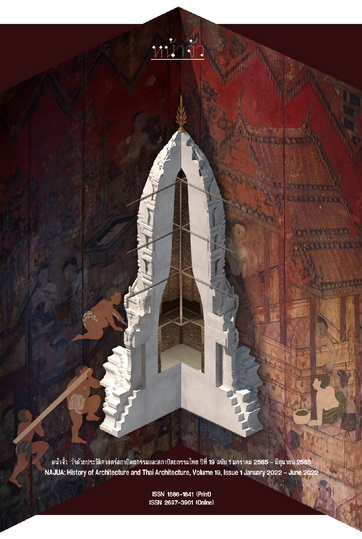“Stand for Stays” a Thai Architectural Wisdom and a Model Design of Stray Dog’s Shelter Center
Main Article Content
Abstract
“Vernacular Architecture” has long matured through infusion approach, improvement, and development to suit ways of living and limitations. It is a kind of architecture that is particular and suitable to the country’s topography, climates, and environment. Unfortunately, it is somehow considered outdated and irresponsive to the society’s needs and substituted by ‘new architecture’ that does not associate with the conditions of that physical area. This causes disequilibrium among human, architecture, and nature. This paper proposes that local wisdom embedded in vernacular architecture has an implication in designing “Stray Dogs Shelter”.
This study will discuss the problems of “Stray Dogs Shelter” designed to solve stray dog long-time problems in Thailand. By surveying the dog shelters in Bangkok and perimeter provinces, problems ere identified as follows: firstly, obstructive space blocking the operations and staffs’ work efficiency; secondly, poor living conditions of the strays caused by inappropriate planning and unsuitable environment inside the center; and, thirdly, negative mindsets of visitors and local people to the shelters and stray dogs.
These problems are caused by the architectural design that lacked deep understanding of user behavior, planning, and materials used. Not only did it badly affect humans, animals, and nearby communities, but also wasted the budget used to solve stray dogs’ problem which was already limited.
This paper proposes ‘Stand for Strays’ concept, aiming to present shelter center ‘model’ that employs ‘local architectural wisdom’ integrating with contemporary design and green architecture as a core framework. The result found is that apart from increasing workers’ productivity and improving stray dogs’ living conditions, the ‘Stand for Strays’ will create a healthy relationship between peoples in the community.
Downloads
Article Details

This work is licensed under a Creative Commons Attribution-NonCommercial-NoDerivatives 4.0 International License.
References
Awut Angkhawut. phūmpanyā sathāpattayakam chut thī nưng [Architectural wisdom series 1]. Bangkok: Arsom Silp Institute of the Arts, 2010.
Faculty of Architecture, King Mongkut’s Institute of Technology Ladkrabang. sathāpat tayakam phư̄n thin [The vernacular architecture]. Bangkok: King Mongkut’s Institute of Technology Ladkrabang, 1982.
Nagashima Koichi. Glocal approach toward architecture of the future. Accessed February 6, 2022. Available from https://www.humiliationstudies.org/documents/NagashimaGlocalApproach.pdf
Sarawuth Pintong, “Revitalizing the fundamental elements of Thai house.” Ph.D. dissertation, Faculty of Decorative Arts, Silpakorn University, 2017.
Vira Inpuntung, and others. sathāpattayakam phư̄n thin Thai [Thai vernacular architecture]. Bangkok: The Association of Siamese Architects under Royal Patronage, 2020.


